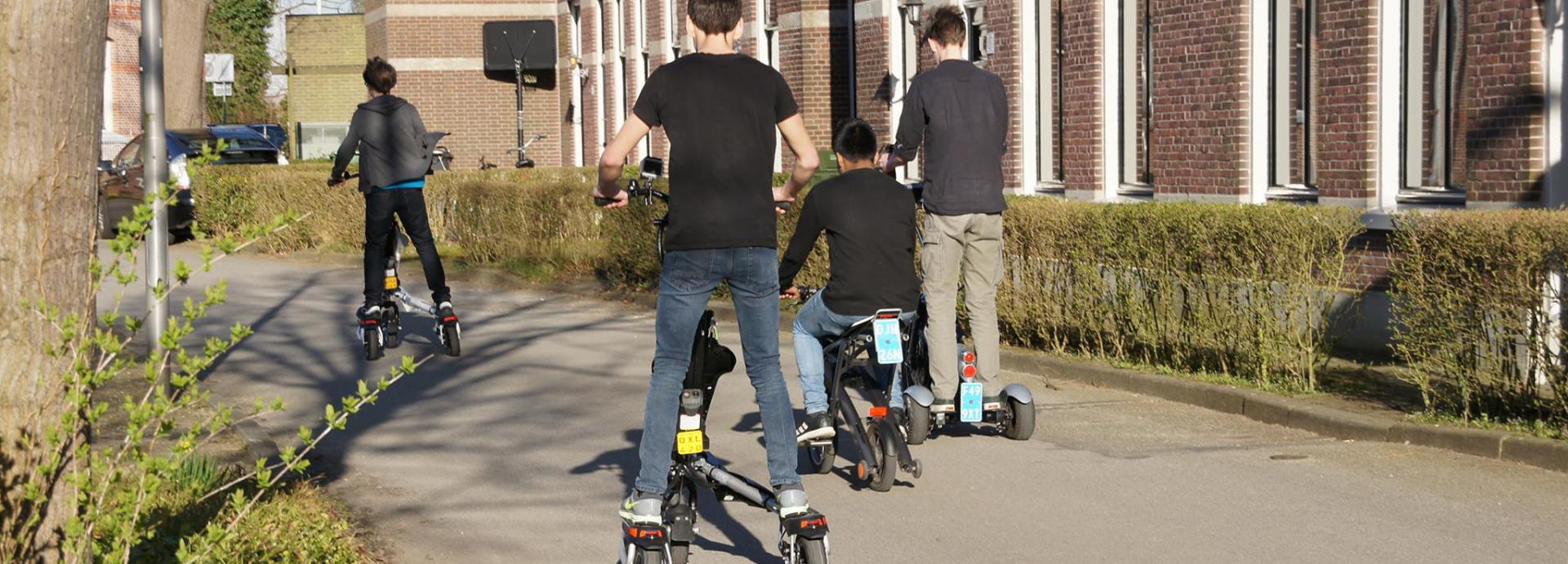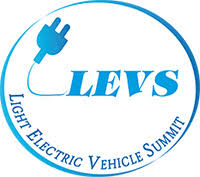
Europese harmonisatie
Lichte elektrische voertuigen (LEV) is een diverse groep van vervoersmiddelen, waarvoor verschillende Europese of nationale regelgeving gelden. Voor elektrische brommers en scooters bestaat al jaren een zgn. Europese typegoedkeuring, waarmee E-scooters in alle Europese landen de weg op mogen. Sinds 2016 zijn de E-step (zonder zadel) en zelfbalancerende vervoersmiddelen (monowheel, segway en hoverboard) daarvan uitgezonderd en inmiddels hebben de meeste Europese landen daarvoor nationale regelgeving. Behalve in Nederland en het Verenigd Koninkrijk worden E-steps in Europa inmiddels toegestaan met op onderdelen verschillende technische voorschriften - bijv. motorvermogen - en verkeersregels, zoals maximum snelheid en plek op de weg. Een vrijwillige Europese productnorm voor LEV krijgt nog weinig opvolging.

 PLEVs support urban transition
PLEVs support urban transition
Submitted for the 3rd World Light Electric Vehicle Summit - Lisbon, 14 & 15 March 2019
Jacoba van Gastel, We All Wheel, the Netherlands
This article describes the opportunities for inclusive micromobility in the urban transition.
Abstract click here for the complete article
Kick scooters are enjoying a global resurgence in popularity. Formerly human-powered, the kick scooters now seen in the streets run on (green) electricity. Personal Light Electric Vehicles (PLEVs) contribute to environmental objectives. These vehicles encourage commuters to go car-free, particularly because foldable electric scooters are a first & last mile solution (combined with public transport or car sharing). Additionally, the use of shared PLEVs relieves the pressure on urban public transport systems. Although discarded scooters can also become a nuisance, the trend towards a sustainable urban experience is generally a welcome one. Cities are in transition; the need for entertainment and leisure in cities has increased. The aging population of Europe and the increasing number of chronic sick people raise the question of how urban infrastructure can be adapted in such a way that an inclusive society remains possible. For elderly people and people with limited mobility, PLEVs offer a more manageable and flexible alternative to mobility scooters. This requires regulations that makes it easier to allow use of PLEVs as well as an infrastructure without barriers: solid road surfaces, smooth transitions between bicycle lane and sidewalk, and a clear division of how the road should be shared.
In Europe, PLEVs are essentially divided into four categories: electric scooters, self-balancing vehicles, electric tricycles and electric bikes. Unlike cars, scooters and mopeds which are governed by EU regulations (EU168/2013 type approval), electric scooters and tricycles (without a seat) and self-balancing vehicles are regulated by national policies. A safety and quality standard is currently being developed at EU level (EN17128); member states will be able to voluntarily adopt this standard. By mid 2019 the use of electric scooters on public road is probably admitted in most member states. Manufacturers still have to adjust different national requirements. Countries with specific requirements and relatively small markets, such as the Netherlands, are unappealing to globally operating manufacturers. While innovative vehicles are important to the EU (environment and inclusive society), European policy is preferable. Belgium, the Scandinavian countries and Austria have imposed few restrictions on PLEVs. So far, there are no records of altering road safety risks. Knowledge exchange will support tuning national policies within Europe and offer opportunities for innovative manufacturers. Aditionally adopting quality standard such as EN17128 would also ensure a road safety level for PLEVs in Europe.

 PLEVs About to go global ?
PLEVs About to go global ?
Presentation on 2nd World Light Electric Vehicle Summit - Rotterdam, Wednesday 22nd November 2017
Jacoba van Gastel, We All Wheel, the Netherlands & Pieter Dekker, Trikke Europe
This article provides a glimpse into the future of the European street environment once the barriers between various regulations have been removed.
Summary click here for the complete article
European discussions about product safety requirements for PLEVs (<25 km/h) (hereinafter EN 17128) are at an advanced stage. As proposed in the EN 17128 standard, PLEVs/Iwheels will be subject to requirements that largely correspond to the current approval requirements (although these differ by country). The EN 17128 standard does, however, impose more requirements than is currently the case. Although the industry may not welcome even more requirements with open arms, the EN 17128 requirements are expected to replace the current approval requirements. This is mainly because approval requirements for PLEVs/Iwheels were nationally established in a short space of time and tend to be stripped-down versions of the moped approval requirements. As a result, each country has established its own regulations. And as the number of PLEVs/Iwheels is still small, Member States do not feel the urgency to harmonise their regulations.
The EN 17128 requirements were based on an analysis of various very different PLEVs. In other words, they allow for more specification. Moreover, an ECE product standard would make harmonisation within Europe possible. If the EN 17128 standard were imposed, the impact would be considerable. There would be both advantages and disadvantages. The main advantage could be that the vehicles become subject to the same regulations as bicycles, because of their low speed and weight. This would bring much clarity to issues such as helmet laws and place on the road. Another advantage is that several new categories of vehicles, such as kick scooters, will become subject to this standard. As a third advantage, a European harmonised product standard would lead to a European market.
Imports and exports would be boosted and it would become easier for e.g. American and Asean parties to enter this market. If the EN 17128 standard were to be imposed globally, street environments could change very quickly. PLEVs would become a real alternative, which would be a great gain. Any new standard comes with the disadvantage that certain vehicles may fail to meet the requirements laid down in the standard.
The main aspects of the EN 17128 standard and the deliberations of the EN 17128 committee will be explained in the article.



